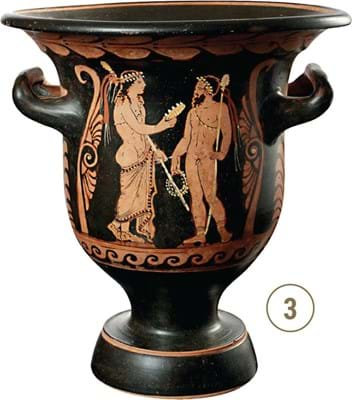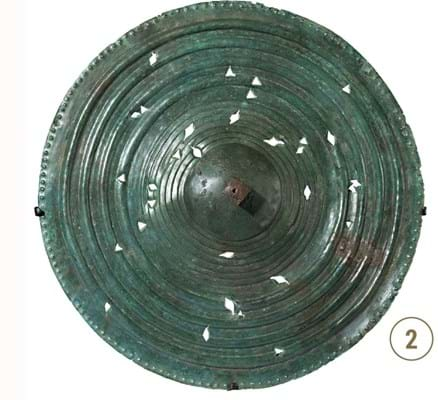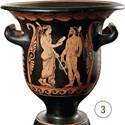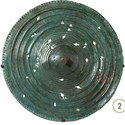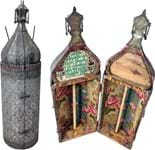Unlike the classic Greek Corinthian helmet, which was worn full-face when in combat and tipped up for comfort, the Italian variant was worn on the top of the head more like a cap.
This is clear in this example, where the apertures for the eyes are too small to be functional.
It was not necessarily the property of a man. Herodotus mentions similar helmets in his Histories when writing of a tribal tradition in what is now Tunisia when two teams of women fought annually dressed in Corinthian finery.
Young women who succumbed to their wounds during the ordeal were thought to have been punished by the goddess for lying about their virginity.
This helmet was previously part of the Axel Guttmann collection of ancient arms and armour sold by Sotheby’s in December 1985. The sale-topping bid was £15,000 (estimate £6000-9000).
Strong suit
Antiquities were the strong suit of this ‘live online’ catalogue. Sold at £13,500 (estimate £8000-12,000) was a 15in (37cm) red figure bell krater, c.330-340BC, with a provenance to the Swiss pioneer of Arabic epigraphy, Max van Berchem (1863-1921).
The decoration, depicting a youthful Dionysos offering a phiale to Silenos, is attributed to the painter Python, one of only artists from ancient Italy whose names have survived on extant works. His workshop was located roughly 50 miles south of modern Naples in the port city of Paestum.
A 16in (41cm) diameter Celtic bronze shield had last appeared for sale at Bonhams in May 2013 when it was offered as part of ‘a private Swiss collection acquired before 1990’. The form and repoussé design suggests an origin in Ireland or perhaps the British Isles during the 5th century.
Fashioned from a single sheet of bronze, it was made for display rather than a defence, although at the end of its life it had been repeatedly ‘stabbed’ with a spear before deposition in water. The ritual of ‘breaking’ an object before offering it to the gods was widespread among the Celts in the Bronze and Iron Ages.
Seven years ago this work of art with an insight into ancient ritual practice was passed at £7000-9000. This time, pitched at £4000-6000, sold at £12,500.


